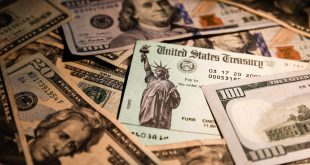Higher than expected wages increase will boost the American dollar, in this high-probability scenario. However; slower salary gains will likely drag the dollar down. As expected figures will certainly create an opportunity to move against the prevalent trend. Nonfarm Payrolls remain significant despite the focus on inflation – it just means that this pivot puts the spotlight on wage data rather than the headline change in jobs.
Investors, traders and Fed policymakers, all await the Nonfarm Payrolls data for May 2022 to depict how high Americans’ pay raises were last month. That is a relatively critical question for investors. On the US central bank’s front, there is a notable amount of focus on suppressing hot inflation, prioritizing the price stability side of Fed’s mandate over employment, the opposite of what it stated in its grand policy review in 2020. The focus has shifted as price rises have grabbed the market sentiment in the world’s largest economy since mid-2021 and the problem has only worsened since the said time.
Not only has fuel price at the pump marched higher, but also the costs of a broad basket of household goods. The Core Personal Consumption Expenditure is the Fed’s favouite gauge of inflation, and it stands at 4.9% as of April; namely more than double the central bank’s 2% target. Truth to say that the Core PCE is off the highs, but it is too early to say it has peaked.
While fuel and food prices are impacted by supply chain problems in global markets, comprehensive inflation is triggered by demand from American workers. Lower unemployment rate of 3.6% is set to pave the way to lower level of 3.5%. After an increase of 420,000 jobs in April, the jobs data for May is set to show a somewhat lower advance of 325,000 according to the economic calendar.
Even if these two figures wander away from forecasts, even significantly, what really and ideally matters more is how much money these workers earn. If labour shortage continues and force employers to raise wages, the extra cash will go to spending, and in turn will push inflation upwards, which would result in USD selloff. The Fed will have to raise rates at a faster pace, trying harder to cool the economy. Higher borrowing costs surely make the dollar more attractive.
As with the recent Consumer Price Index (CPI) data, base impact of 2021 makes the yearly figures less significant than usual, putting the focus on the monthly figure. If some moderation is observed in wages, that would suggest softer price pressures and a more moderating economy that is able to require intervention from the central bank to cool off.
Economists forecast Average Hourly Earnings MoM to have risen by 0.4% in May, in the middle between 0.3% recorded in April and 0.5% in March. Any minor deviation from 0.4% is set to make a substantial difference to the dollar.
If NFP data proves above expectations; then A rise of 0.5% or more in monthly salaries will certainly boost the dollar. It would show that employers are willing to cough up higher pay to attract workers, and perhaps even that they could pass these higher costs to consumers. That means more inflation in the pipeline.
This scenario has the highest probability. Wage growth tends to substitute between beating estimates and missing them. After last month’s disappointing figures, markets could see an upswing now. Moreover, most recent economic indicators such as the ISM Manufacturing PMI, have pointed to an economy that is set on fire.
If NFP data proves below expectations; wage growth of 0.3% or lower will likely drag the dollar lower. It will imply that faint signs of peak inflation were more significant. It will allow the Fed to stick to its plan of raising rates by 50 bps in June and July – but moderating its moves afterward.
If NFP data proves within expectations; so there could be other factors that will come into play, such as monthly revisions for April and March, the yearly number and the headline NFP. This would be a scenario in which the dollar jumps to one direction in the initial, knee-jerk reaction, and then later corrects, namely a potential opportunity to go contrarian.
As markets get closer to the release time, forecasts by the economists and researchers of major banks are so popular among traders during the current hours.
TDS
“Employment likely continued to advance firmly in May (300K) but at a more moderate pace after consecutive job gains at 428K in March and April. Employment in the household survey likely rebounded after printing negative in April. We expect this to lead to a drop in the unemployment rate to a post-COVID low of 3.5%. We also look for wage growth to remain steady at 0.3% MoM (5.2% YoY).”
NBF
“Hiring should have continued at a strong pace in the month given the very high number of vacancies. Layoffs, meanwhile, could have stayed roughly stable judging from previously released data on initial jobless claims. All told, payrolls may have increased by 325K. The household survey is expected to show a similar gain, a development which could leave the unemployment rate unchanged at 3.6%, assuming a one-tick increase in the participation rate to 62.3%.”
CIBC
“Overall, headcounts likely increased by 300K, which would still be enough to push the unemployment rate down to 3.5%. With hiring likely tilted towards lower value-added services, wage growth likely slowed to 0.3% on the month. We’re below the consensus which could see the USD and bond yields fall.”
Danske Bank
“We expect another strong US jobs report with 400K new jobs in May.”
Deutsche Bank
“We project gains of 325K vs last month’s 428K reading that came in above the median estimate of 380K on Bloomberg.”
ING
“US jobs report should be firm (320K). Once again the main constraint will be a lack of worker supply with nearly two vacancies for every unemployed American (we will get an update on vacancies in next Wednesday’s JOLTS report). This means wages will continue to be bid higher and the unemployment rate will likely fall to 3.5%.”
Wells Fargo
“We forecast NFP to rise 325K in May and look for the unemployment rate to decline to 3.5%. A 325K increase, should it occur, would mark a moderation from the job gains seen over the past couple of months. Regional Fed employment indices improved in May, but at a cooling pace. The job openings rate has also appeared to top out and small business hiring plans have softened. With job openings more smoothly translating into new hires, stiff competition for workers will presumably improve and help quell wage pressures. We forecast average hourly earnings to rise 0.4% MoM in May.”
Citibank
“We continue to expect that monthly job gains are likely to slow over the coming months as labour supply shortages limit the pace of hiring, with 315K payrolls added in May and some further slowing back towards a pre-pandemic pace of ~150K-250K over the coming months.”
Commerzbank
“In May, we expect another noticeable increase in employment, even though the various negative factors suggest that the momentum is slowing. We forecast job growth of 300K, roughly lower than in April.”
SocGen
“We expect 440K NFP reading in May. Expectations are for moderation but we still see strong hiring in retail franchises. This includes restaurants and hotel chains that are still struggling to find employees and return to normal operations. In April, the unemployment rate held steady at 3.6%, as expected. We look for a modest decline to 3.5% in May. Labour force participation should rise slightly from the lower April pace of 62.2 (which had been a drop from 62.4 in March). Overall, as the unemployment rate dips further below the long-term normal level (4.0% according to the Federal Reserve and 4.4% according to the Congressional Budget Office), each decline should be more challenging. Wages are moderating slightly, but we view the pace of above 4% as still too high and adding to inflation and profit margin concerns. Workers should enjoy a wage that is above inflation as long as labour productivity is positive.”
Westpac
“US employment growth looks to be losing momentum but is currently still robust (370K), consistent with a further decline in the unemployment rate. Ahead, we believe employment growth will slow further, as tightening takes effect, and that participation will strengthen, making the unemployment rate of 3.5% expected from this month a likely low for the cycle. Given the tight state of the labour market, hourly earnings will continue to be bid higher, though not as aggressively as in 2021 and at less than the rate of inflation. As a result, real incomes are set to continue falling through 2022.”

 Noor Trends News, Technical Analysis, Educational Tools and Recommendations
Noor Trends News, Technical Analysis, Educational Tools and Recommendations




